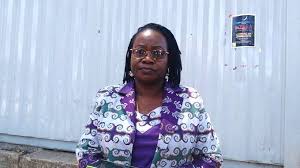Food insecurity worries govt

THE Government has outlined ambitious plans to plug the gap of chronically food insecure citizens which has increased in rural and urban communities from about 500 000 in 2015 to about 1.7 million people in 2020.
In its new economic blueprint- National Development Strategy launched on Monday, it aims among other measures to achieve an upper middle-income society by 2030.
Reclaiming the regional breadbasket status is another aim.
According to the five year strategy the agricultural sector, which is responsible for feeding the nation and providing livelihoods to 67% of the country’s population in rural areas is vital for recovery and growth of the economy.
However, food insecurity has been consistently growing in Zimbabwe.
8″During the period 2015 to 2020, the proportion of food-insecure rural population ranged between 30 and 59%. Urban vulnerability was also on the rise reaching 30% or 2.2 million people by 2020. Further, the proportion of chronically food insecure people in rural and urban communities increased from about 500 000 in 2015 to about 1.7 million people in 2020″ reads part of the document.
Livestock production has been singled out as a key sector to achieve food security but due to recurrent drought the sector especially in the Matabeleland region and Midlands province, has had devastating effects on farmers, wiping out most of their livestock and leading to distress sales.
For instance, official figures state that Matabeleland South province alone last year lost more than 25 000 cattle due to drought, while 6 220 deaths were recorded in Matabeleland North.
Zimbabwe has a national cattle herd of 5,7 million down from nearly six million cattle in 1996 due to droughts which have killed thousands of cattle especially in the southern region.
“Livestock herd sizes, nationally, declined by about 20% for beef, over 83% for dairy, and 26% and 25% for pigs and small ruminants respectively, between 2009 and 2020” indicated the document.
“Furthermore, the productivity of smallholder cattle herds remains very low, with average calving rates of about 45% against a potential of 60%, and off-take rates of about 6% against a recommended 20%”.
The document says the national development strategy will prioritise animal health and production through strengthening farmer knowledge, skills in livestock production.
Pasture green belts will be developed, forage banks created, promote on-farm feeds formulation using cassava and cow peas to produce survival rations, the document says.
The national herd is again at risk this year, with water bodies in Matabeleland South, Matabeleland North, Midlands, Masvingo and Manicaland, drying up while pastures fast depleting.
These provinces account for 80% of the national beef cattle herd.
A national bull centre and semen processing laboratory to strengthen conservation of animal genetic resources and research and develop stress tolerant animal breeds and further promote artificial insemination by cascading the programme to A1 small holder farmers will be implemented.
Part of the outcomes of the blueprint is increase to retain the regional breadbasket status.
“The main objective is to increase food self-sufficiency from the current level of 45% to 100% and reduce food insecurity from the high of 59% recorded in 2020 to less than 10% by 2025.
“The target is also to increase maize production from 907 629 tonnes in 2020 to 3 million tonnes by 2025 and beef production from 49 115 tonnes in 2020 to 110 000 tonnes by 2025”.
As a result of declining agricultural output the country is spending millions monthly on food imports.






